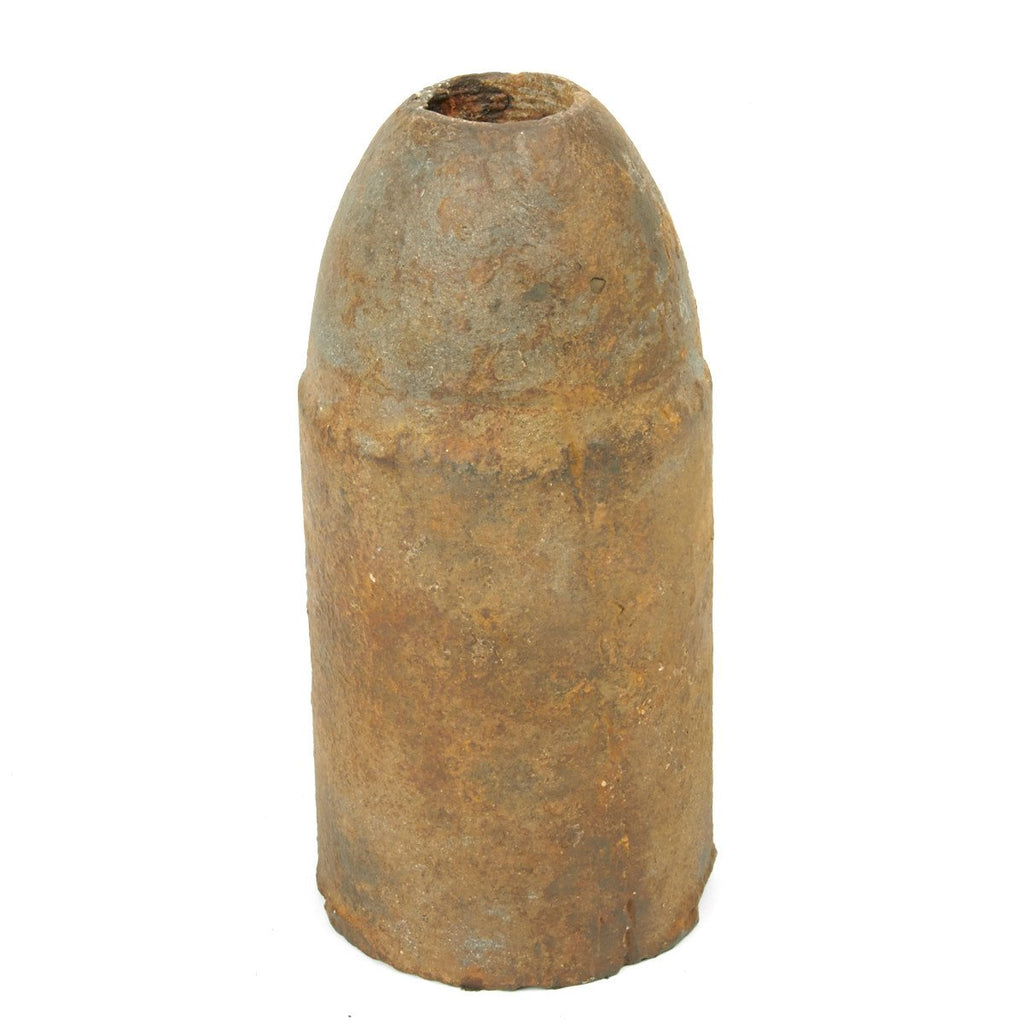-
Original Item: Nearly 150 years old these are Rare Projectiles for Armstrong Breech Loading Cannon. You probably know this already, but shell refers to a hollow iron or steel projectile, which could be filled with various materials. Common shells were filled with explosives and provided with a fuse to detonate them. Now, we call them explosive shell or, if the filling is a modern explosive instead of black powder, high explosive (HE) shell.
The 1800s saw numerous experiments in artillery to improve range and accuracy. Two factors were key: spinning the projectile and sealing the propelling gas behind it while it was in the gun tube. By the 1880s the problem had been pretty much solved with the use of driving bands, but before that various solutions were attempted. The famous Armstrong-Whitworth studded shell was a stopgap measure to allow muzzle loading cannon to fire rotating projectiles. The British called this system Rifle Muzzle Loaders, or RML.
The real key to solving the problems was loading the tube from the breech end. The Armstrong Company developed some advanced rifled breech loading guns in the 1850s, producing the most advanced artillery of the day. In 1858 Armstrong introduced a breech-loading gun with polygroove rifling, having 38 lands and grooves. Extant records indicate sales of this gun to American customers during our Civil War, along with various European customers. In fact, although polygroove sounds like a modern term, it was introduced in the 1850s with the new Armstrong system.
The projectiles of these guns used neither the driving stud system nor the driving band system, but rather encased the entire projectile in a thin layer of lead, which molded into the rifling when the propellant charge drove the projectile into the bore. This system was used in a variety of calibers, but one size, the 12-pounder, featured an extremely advanced concept, the tapered bore. The muzzle end of the barrel was narrowed to give an especially smooth finish to the lead sheath, which added to accuracy and reduced wind drag on the shell. Most artillery people think of the tapered bore as a German innovation during the Second World War. The Armstrong innovations sparked activity throughout Europe to modernize artillery establishments.
IMA has a few of these early Armstrong-type explosive shell projectiles. The lack of any driving band or studs identifies these shells as the very early Armstrong type, and they probably were for an 8 or 9 pounder. The original lead cladding was folded over the lip seen where the ogive (curved front end) begins. Unfortunately, soldiers apparently stripped off the lead sheathing once the type became obsolete, so ours are smooth steel. Lead is too useful to leave lying around. It is also worth noting that in the period when these were manufactured, the bursting charge was black powder, and explosive shell were generally not stored with the powder inside, because of the certainty that the powder would deteriorate. The photographs show how nicely they clean up: much of the stuff that looks like rust is actually clay-heavy dirt, and cleans off nicely. And then, what a bookend or paperweight you’ll have, even if you don’t set it up with your other shot and shells! These are extremely rare and collectors hardly ever see them for sale.
We have photographed a cleaned version, for reference only, it looked just like the dirty one (well sell them dirty!) but we spent 45 minutes cleaning it with solvent, oil, and a wire brush.
- This product is not available for international shipping.
- Not eligible for payment with Paypal or Amazon
- Totally inert. Not available for export.


We Buy Military Antiques
Our team expert buyers travels the world to pay fair prices for entire estate collections to singular items.
START SELLING TODAY







